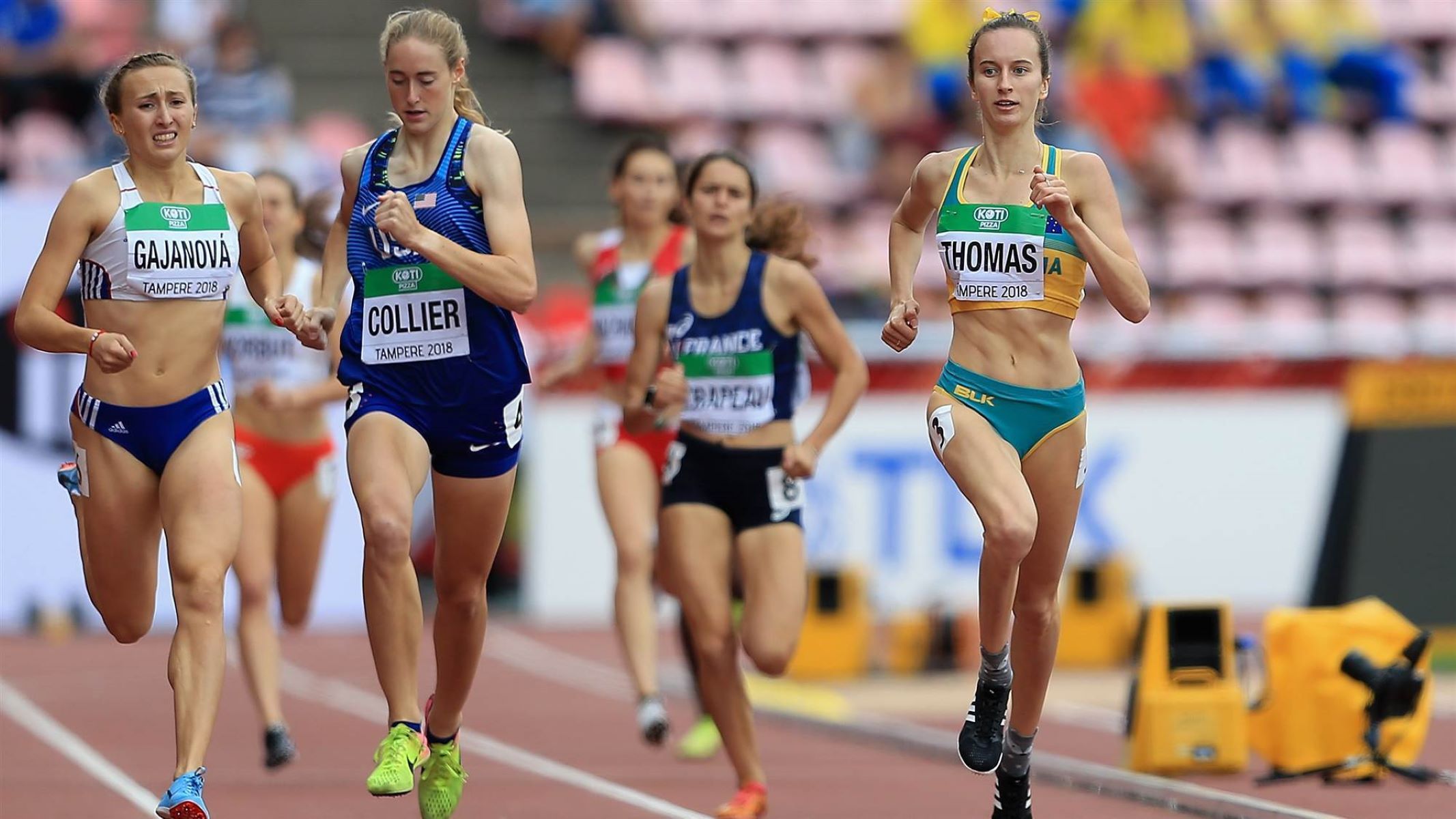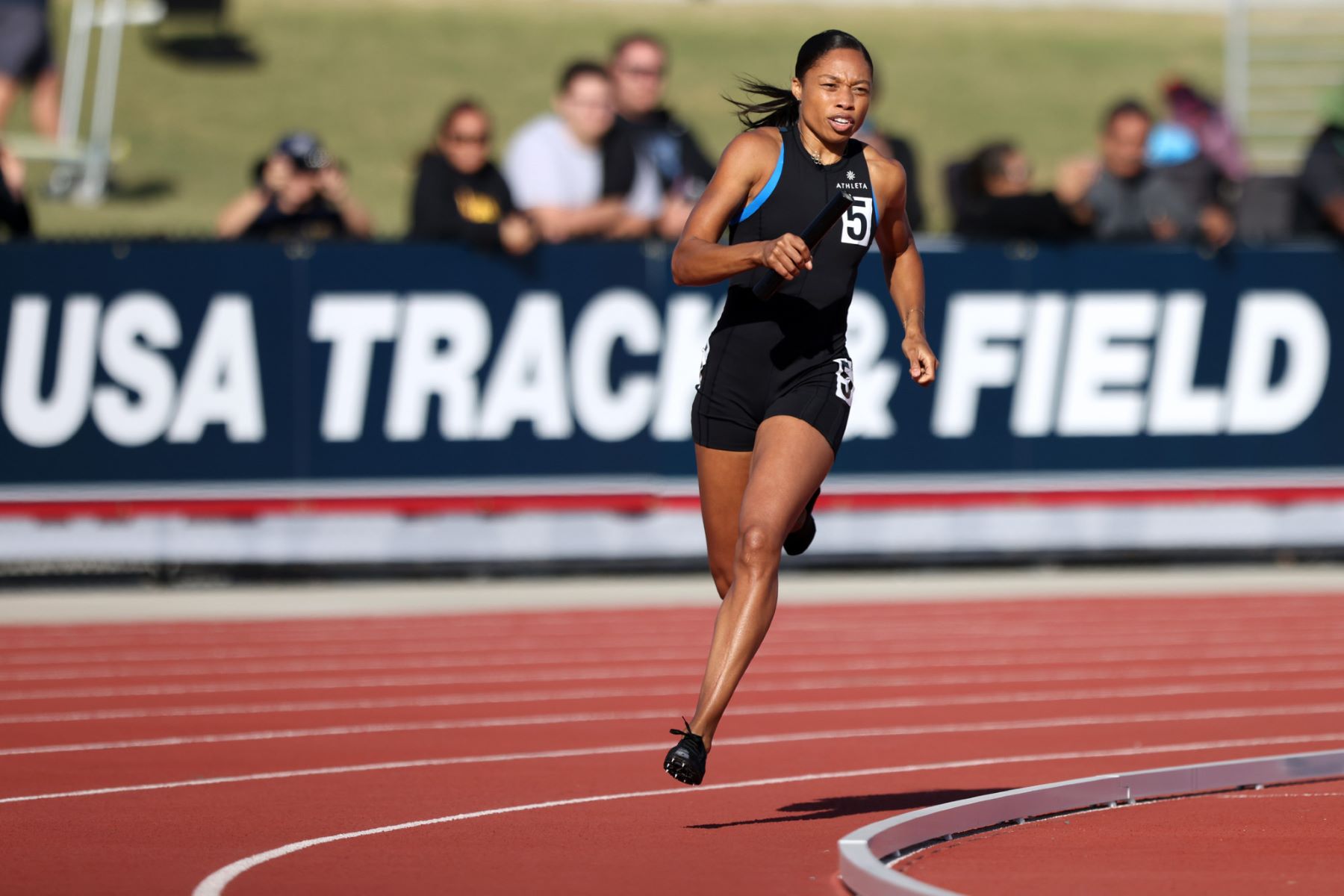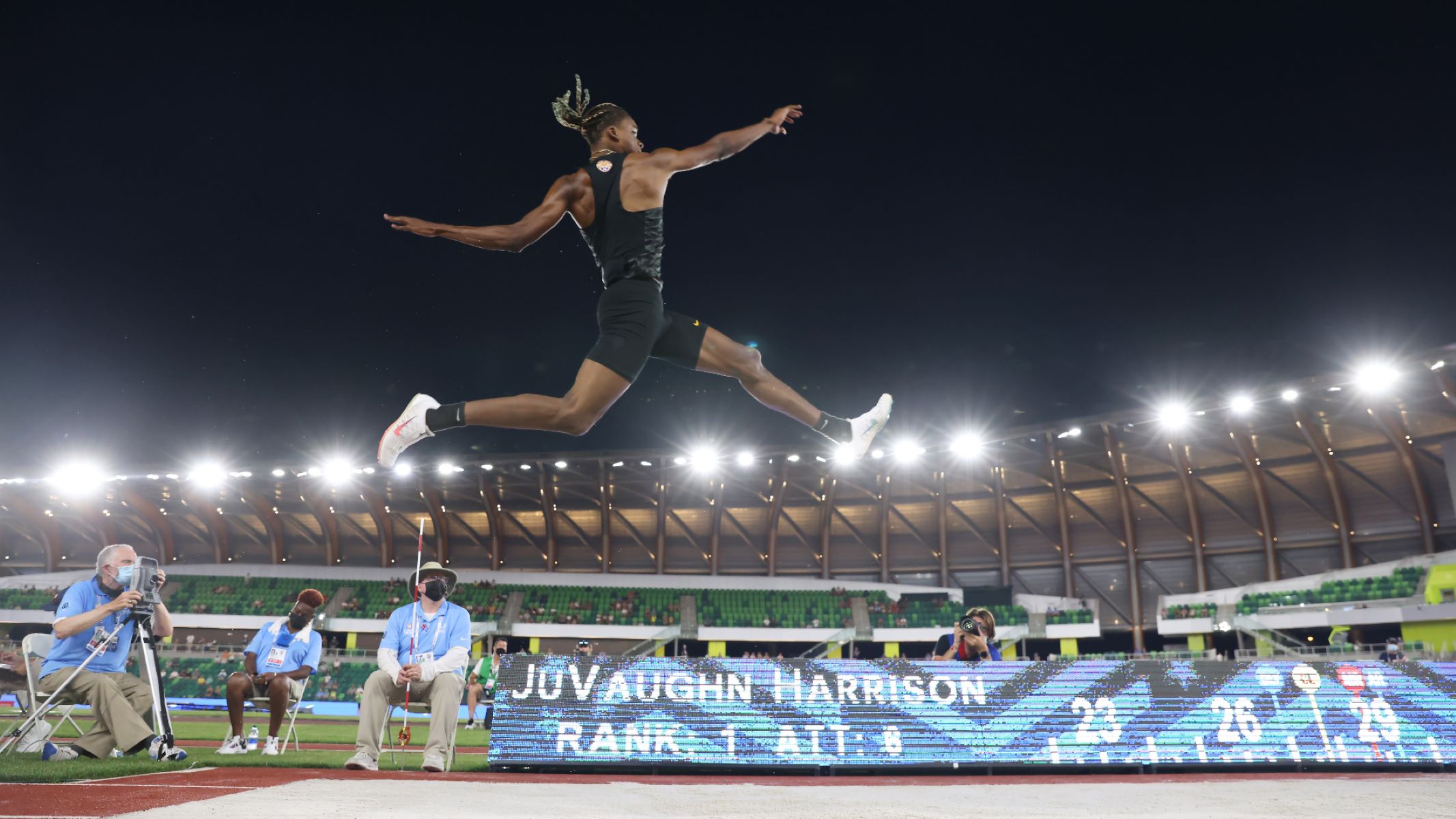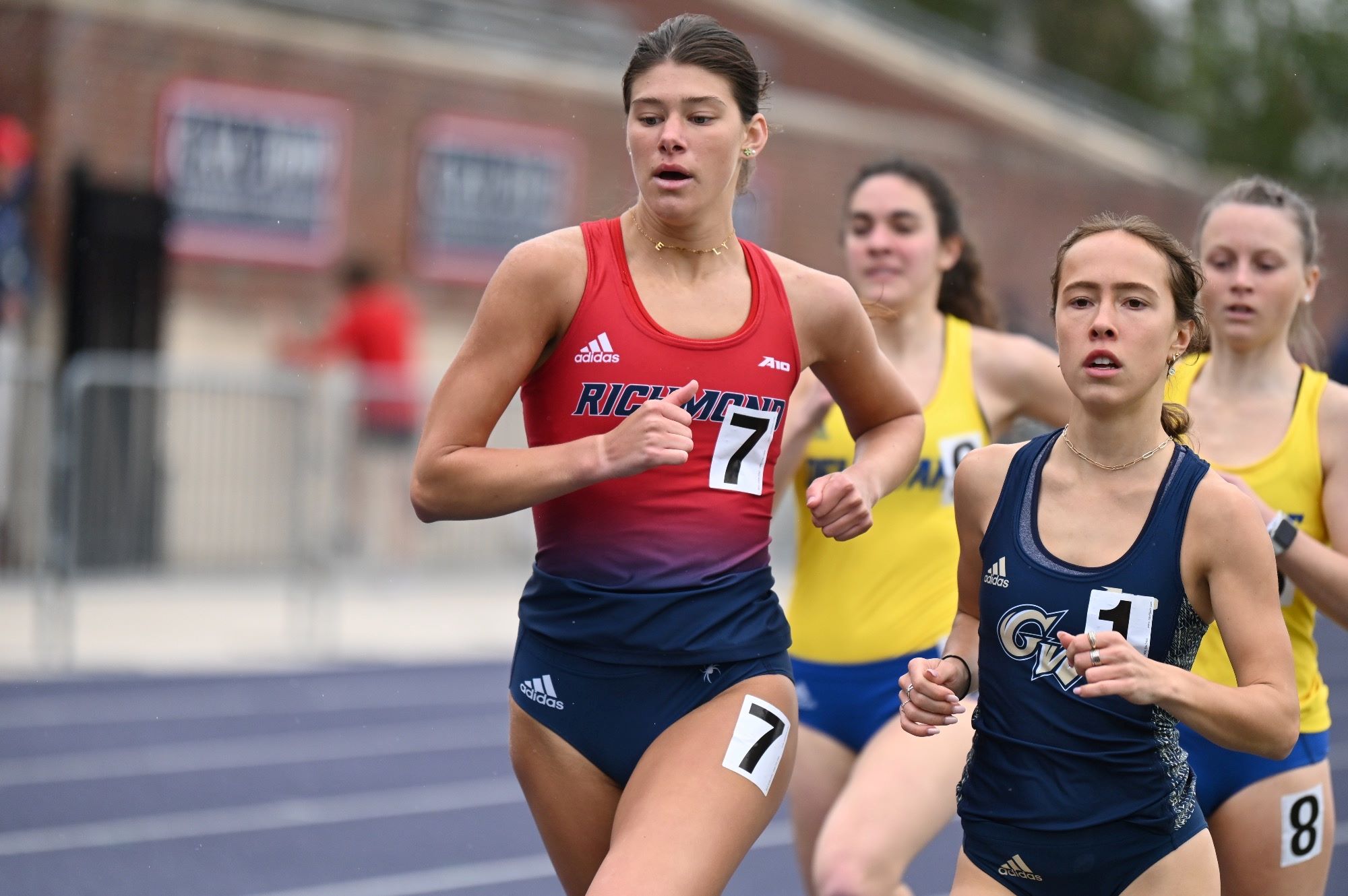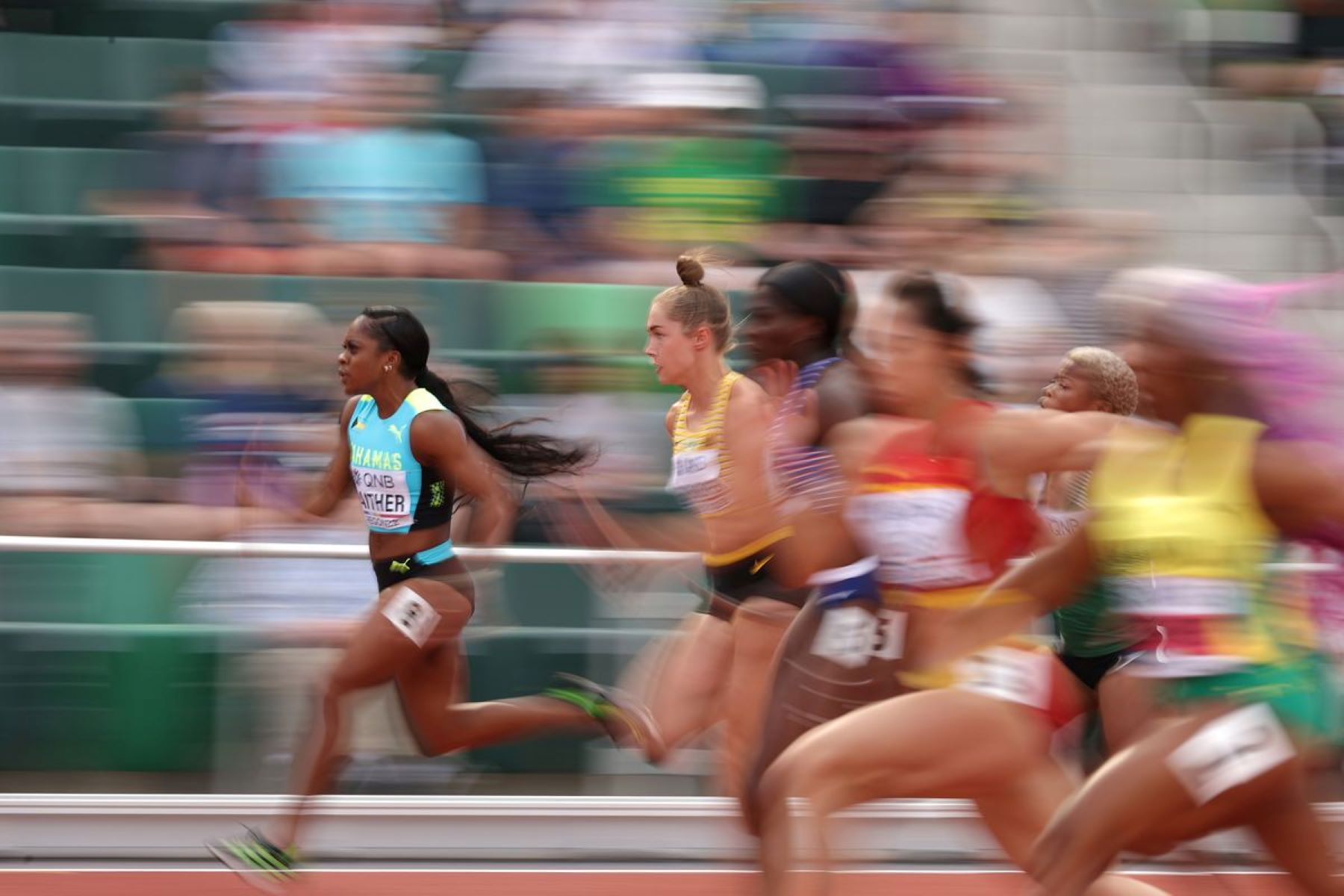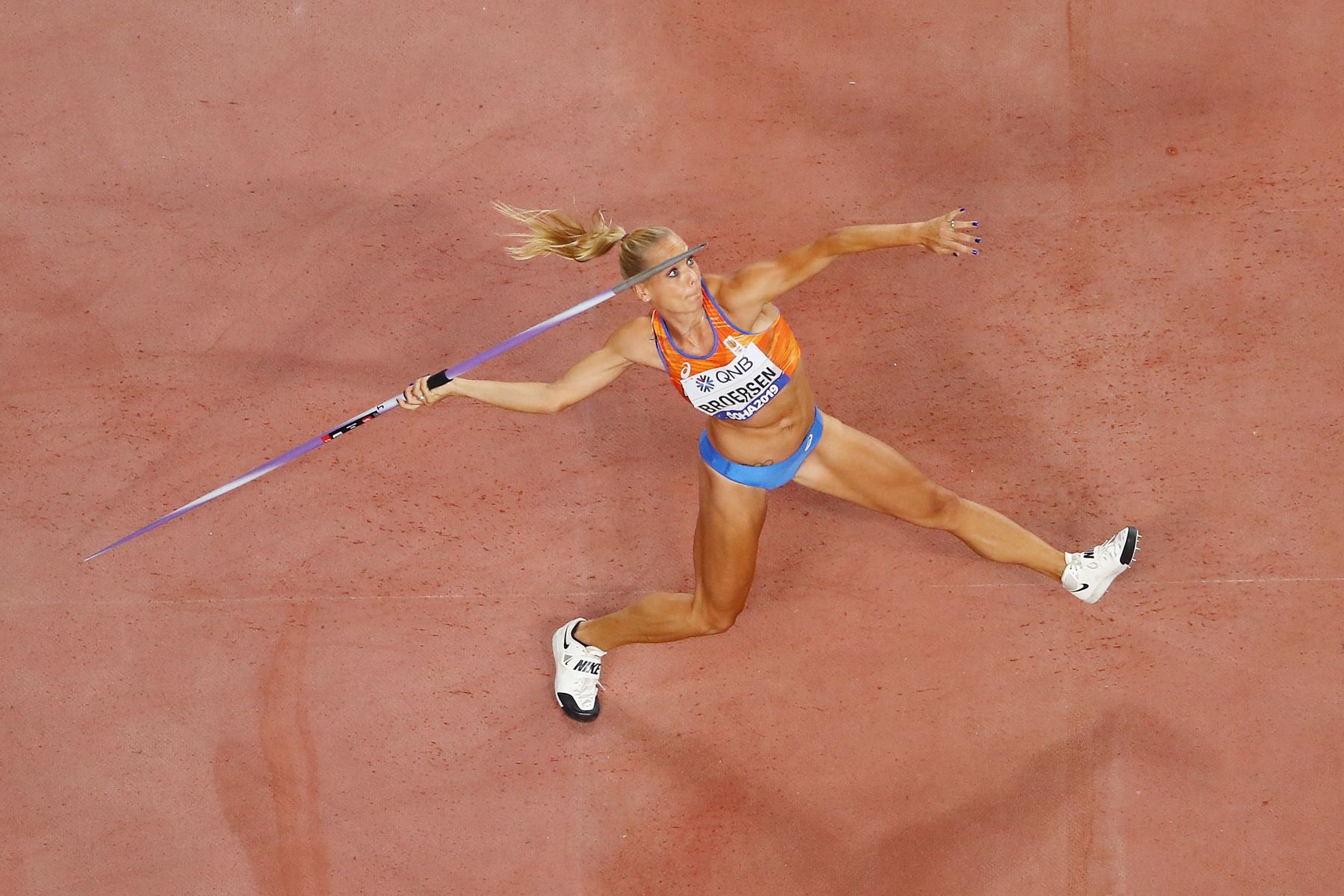

Featured
What Is A Heptathlon In Track And Field
Published: September 3, 2023
Learn all about the featured event in track and field - the heptathlon. Discover the seven different disciplines and how athletes compete for victory.
Introduction
Track and field is an exhilarating and demanding sport that tests an athlete’s speed, strength, agility, and endurance. Within track and field, one of the most challenging and captivating events is the heptathlon. Combining a diverse range of athletic disciplines, the heptathlon showcases the versatility and athleticism of its participants.
The heptathlon is a multi-event competition consisting of seven track and field events that are completed over two days. It requires athletes to excel in a combination of sprinting, jumping, and throwing events, making it a truly comprehensive test of an athlete’s abilities.
This article aims to provide a detailed overview of the heptathlon, from its definition and history to the events included, scoring system, training, and preparation, as well as strategies and tactics employed by athletes. Additionally, we will highlight some of the famous heptathletes who have left an unforgettable mark on the sport.
Whether you are an aspiring heptathlete, a track and field enthusiast, or simply curious about this compelling sport, this article will provide valuable insights into the world of heptathlon and its significance in the athletic landscape.
Definition of Heptathlon
The heptathlon is a multi-event athletic competition designed specifically for women. The word “heptathlon” stems from the Greek words “hepta,” meaning seven, and “athlon,” meaning contest. As the name suggests, the heptathlon consists of seven different track and field events, each demanding a unique set of skills and abilities.
Unlike the decathlon, which is designed for male athletes and consists of ten events, the heptathlon incorporates a combination of running, jumping, and throwing events to test an athlete’s overall athleticism and versatility. The events included in the heptathlon are:
- 100-meter hurdles
- High jump
- Shot put
- 200 meters
- Long jump
- Javelin throw
- 800 meters
Each event in the heptathlon requires a distinct skill set. The 100-meter hurdles assesses an athlete’s speed and technique in hurdling, while the high jump evaluates their ability to clear a bar set at increasing heights. The shot put measures an athlete’s strength and throwing technique, while the 200 meters tests their speed and endurance in a sprinting event.
The long jump focuses on an athlete’s explosive power and jumping ability, while the javelin throw emphasizes throwing technique, power, and accuracy. Finally, the 800 meters challenges an athlete’s endurance to complete two laps around the track at the highest possible speed.
The scoring system in heptathlon assigns points to each athlete based on their performances in each event, which are then combined to determine the overall winner. This system allows athletes to earn points in relation to their performance, rewarding exceptional performances in each individual event as well as overall consistency across all seven events.
Overall, the heptathlon provides a comprehensive test of an athlete’s athleticism, requiring proficiency in a range of different skills and disciplines. It showcases the physical and mental abilities of female athletes and has become one of the most captivating events in the sport of track and field.
History of Heptathlon
The origin of the heptathlon can be traced back to ancient Greece, where a similar multi-event competition called the pentathlon was popular. The pentathlon consisted of five events – long jump, javelin throw, discus throw, sprint race, and wrestling. However, the concept of the heptathlon as we know it today emerged much later in the modern era of track and field.
The first recognized women’s heptathlon was held in 1980 at the European Athletics Championships in Czechoslovakia. This marked a significant milestone for women in athletics, as it provided them with a platform to showcase their athletic abilities and compete at a high level. The event gained popularity quickly, leading to its inclusion in major international competitions such as the Olympics and World Championships.
Over the years, the heptathlon has undergone some changes to ensure balance and fairness in the events. The 100-meter hurdles, high jump, and shot put have been part of the heptathlon since its inception. However, different sprint distances and throwing events were included before settling on the current combination of the 200 meters, long jump, and javelin throw.
Throughout its history, the heptathlon has seen remarkable performances from legendary athletes. One of the most notable heptathletes is Jackie Joyner-Kersee from the United States, who dominated the event in the 1980s and 1990s. Joyner-Kersee set multiple world records and won three Olympic gold medals in the heptathlon.
Another legendary figure in the history of heptathlon is Carolina Klüft from Sweden. Klüft was a dominant force in the early 2000s, winning multiple World Championships and an Olympic gold medal in the event. Her versatility and consistency made her one of the greatest heptathletes of all time.
With its rich history and the emergence of new talent, the heptathlon continues to captivate audiences around the world. It provides a platform for female athletes to excel and showcase their skills across a variety of disciplines. The history of the heptathlon is a testament to the determination and athleticism of women in track and field.
Events Included in Heptathlon
The heptathlon encompasses a diverse range of events that challenge athletes in various physical disciplines. These seven events, carefully selected to create a well-rounded competition, test an athlete’s speed, strength, agility, and endurance. Let’s take a closer look at each of the events included in the heptathlon:
- 100-Meter Hurdles: This event demands both speed and technique as athletes race over ten hurdles placed at a distance of 10 meters apart. The ability to maintain a fast pace while efficiently clearing the hurdles is crucial to success in this event.
- High Jump: The high jump challenges athletes’ vertical leaping ability as they strive to clear a horizontal bar without knocking it off. Athletes must clear ever-increasing heights by arching their bodies over the bar, combining technique, explosiveness, and flexibility.
- Shot Put: This event tests an athlete’s strength and throwing technique as they propel a heavy metal ball from the shoulder, aiming for maximum distance. It requires a combination of explosive power, upper body strength, and proper release technique.
- 200 Meters: A sprinting event, the 200 meters measures an athlete’s speed, acceleration, and endurance. Athletes must maintain high velocity for the duration of the race, often strategizing when to push for maximum effort.
- Long Jump: This event showcases an athlete’s ability to generate explosive power and technique off the take-off board as they strive to cover the maximum distance horizontally. Successful long jumpers combine speed, leaping ability, and precise technique for a significant jump.
- Javelin Throw: In this throwing event, athletes aim to launch a spear-like javelin with precision and power. It requires a combination of proper throwing technique, arm strength, core stability, and timing to achieve maximum distance.
- 800 Meters: The final event of the heptathlon is a demanding and tactical middle-distance race. Athletes must balance speed and endurance as they complete two laps around the track, pushing themselves to maintain a steady pace and sprint for the finish.
These seven events have been carefully selected to showcase an athlete’s versatility, athleticism, and endurance. Excitement builds across the two days of heptathlon as athletes demonstrate their prowess in each discipline, accumulating points along the way to determine the overall winner.
The variety of events in the heptathlon ensures that only the most well-rounded and resilient athletes are successful, rewarding those who can excel in multiple disciplines. This challenging collection of events has propelled many talented athletes to greatness, making the heptathlon one of the most captivating and exhilarating events in the world of track and field.
Scoring System in Heptathlon
The scoring system in heptathlon is designed to measure an athlete’s performances in each event and determine an overall winner. Points are awarded based on an athlete’s performance relative to specific standards or benchmarks set for each discipline. The scoring system ensures that exceptional performances in individual events are duly recognized while also rewarding consistency across all seven events.
In the heptathlon, points are typically assigned using the scoring tables established by the International Association of Athletics Federations (IAAF) or the World Athletics. These tables are periodically updated to account for advancements in athletic performance and maintain fairness across different eras.
Each individual event in the heptathlon contributes points to an athlete’s overall score. The better an athlete performs in a particular event, the more points they will receive. For instance, a higher jump in the high jump or a faster time in the 200 meters will result in more points awarded.
These points are tabulated and added up after each event to determine the overall standings. The athlete with the highest total score at the end of the seven events is crowned the winner.
The scoring tables for heptathlon are calculated based on mathematical formulas that take various factors into account, such as the world record performance, the average performance of top-level athletes, and the distribution of performances across the range of athletes. These factors help to establish a fair and standardized scoring system.
The scoring tables are designed in a way that encourages athletes to strive for personal best performances and record-breaking achievements. Significant milestones, such as breaking a national or world record, often result in higher points awarded in recognition of outstanding performances.
Additionally, the placement of athletes relative to their competitors also affects the number of points awarded. Athletes who consistently finish higher in events will accrue more points, indicating their overall strength and consistency across the various disciplines of heptathlon.
Overall, the scoring system in heptathlon accounts for both individual event performances and overall consistency. It ensures that athletes are rewarded for excelling in each discipline while also emphasizing the importance of maintaining a high level of performance throughout the entire competition. This approach highlights the all-around abilities of the heptathletes and adds to the excitement and competitiveness of the event.
Training and Preparation for Heptathlon
Training for heptathlon requires a well-rounded approach that focuses on developing the skills and abilities needed for each of the seven events. Successful athletes in heptathlon must possess a balance of speed, strength, agility, endurance, and technical proficiency. Here are some key aspects of training and preparation for heptathlon:
1. Event-Specific Training: Athletes need to dedicate specific training time to each event, focusing on improving technique, strength, and speed. This involves working with specialized coaches who can provide guidance and expertise in each discipline of heptathlon.
2. Strength and Conditioning: Building overall strength and conditioning is crucial for success in heptathlon. Athletes undertake strength training exercises aimed at improving power, explosiveness, and muscular endurance. Additionally, core stability and flexibility exercises are incorporated to improve performance in jumping and throwing events.
3. Endurance Training: Long-distance running, interval training, and aerobic exercises play a significant role in heptathlon preparation. Athletes focus on building endurance to perform well in events like the 800 meters, helping them maintain a strong pace throughout the competition.
4. Technical Skill Development: Athletes work tirelessly on refining technical skills for each event. This includes practicing hurdling technique, perfecting high jump approaches, shot put throwing drills, and mastering the intricacies of long jump and javelin throw techniques.
5. Event Sequencing and Strategy: Training also involves strategic planning for event sequencing, pacing, and performance optimization. Coaches and athletes work together to develop individualized competition strategies based on an athlete’s strengths and weaknesses.
6. Mental Preparation: Heptathlon demands mental fortitude and resilience. Athletes focus on mental preparation techniques such as visualization, goal-setting, and mental rehearsal to enhance concentration, confidence, and performance under pressure.
7. Periodization: Training is structured using a periodized approach, dividing the training year into specific phases that emphasize different aspects of fitness and performance. Periods of intense training are alternated with periods of rest and recovery to prevent overtraining and maximize performance gains.
8. Competition Experience: Actively participating in heptathlon competitions is crucial for athletes to gain experience, test their skills, and refine their performance under real competition conditions. Competing against top-level athletes helps identify areas for improvement and fine-tune strategies for future events.
Training and preparation for heptathlon requires dedication, discipline, and an athlete’s commitment to mastering multiple disciplines within track and field. By following a holistic training approach and focusing on event-specific skills, athletes can develop the physical attributes and mental resilience necessary to succeed in this demanding and challenging multi-event competition.
Strategies and Tactics in Heptathlon
Heptathlon requires not only physical prowess but also strategic thinking and tactical decision-making throughout the competition. Successful heptathletes employ various strategies and tactics to optimize their performance and maximize their chances of winning. Here are some essential strategies and tactics used in heptathlon:
1. Event Priority: Athletes need to identify their strengths and weaknesses in the different events and allocate resources accordingly. Focusing extra training time and effort on their weaker events can help minimize point losses and maximize potential gains.
2. Point Accumulation: Understanding the scoring system is crucial in heptathlon. Athletes strategically aim to accumulate points steadily across all events rather than taking excessive risks for short-term gains. Consistent, steady performances across all disciplines can lead to a higher overall score.
3. Pacing and Energy Management: Managing energy levels throughout the competition is key to a successful heptathlon. Athletes strategically pace themselves in longer events, such as the 800 meters, to avoid early fatigue and ensure they maintain a strong finish. Expert energy management can play a significant role in overall performance.
4. Event Tapering: Heptathletes often adjust their training in the days leading up to the competition to allow for rest and recovery. This tapering period allows athletes to arrive at the competition fresh and well-rested for optimal performance over the two-day competition.
5. Strategic Warm-up: A well-planned warm-up routine is essential in heptathlon. Athletes carefully structure their warm-up to prepare their bodies for the specific demands of each event, ensuring they are physically and mentally ready for peak performance.
6. Adapting to Conditions: Heptathletes must be adaptable and able to adjust their strategies based on external factors. Factors such as weather conditions, equipment variations, and competition circumstances require quick decision-making to optimize performance in each event.
7. Tracking Competitors: Heptathletes pay close attention to their competitors’ performances throughout the competition. Assessing the strengths and weaknesses of other athletes can help guide an athlete’s own strategies and tactics, such as pushing harder in events where competitors may have weaknesses or conserving energy against stronger opponents.
8. Mental Resilience: Mental toughness is vital in heptathlon. Athletes often face setbacks or disappointment in individual events, but maintaining focus, confidence, and resilience is crucial for overall success. A positive mindset and the ability to quickly recover from setbacks can make a significant difference in overall performance.
9. Utilizing Recovery Periods: Athletes strategically use recovery periods between events to rest, refuel, and mentally prepare for the next challenge. Optimal recovery during breaks can help maintain energy levels and overall performance throughout the two-day competition.
By employing these strategies and tactics, heptathletes can enhance their performance and increase their probability of achieving their best results. A combination of physical prowess, smart decision-making, and mental resilience can make all the difference in this demanding and multi-faceted event.
Famous Heptathletes
The sport of heptathlon has seen many extraordinary athletes who have left a lasting impact on the sport. These accomplished athletes have showcased exceptional skills, determination, and an ability to excel across a variety of track and field events. Here are some of the most famous heptathletes:
1. Jackie Joyner-Kersee: Considered one of the greatest track and field athletes of all time, Jackie Joyner-Kersee from the United States dominated the heptathlon in the 1980s and 1990s. She won numerous Olympic and World Championship titles in the event and set several world records, earning her the reputation as a legendary athlete.
2. Carolina Klüft: Hailing from Sweden, Carolina Klüft emerged as a force to be reckoned with in the early 2000s. She won multiple World Championship titles and claimed Olympic gold in heptathlon. Klüft’s versatility and consistent performances made her one of the most successful heptathletes of her era.
3. Jessica Ennis-Hill: Representing Great Britain, Jessica Ennis-Hill became a household name in heptathlon. She captured the hearts of fans worldwide with her impressive performances, culminating in an Olympic gold medal at the 2012 London Olympics. Ennis-Hill’s athletic prowess and competitive spirit made her one of the most beloved heptathletes in recent times.
4. Nafissatou Thiam: Hailing from Belgium, Nafissatou Thiam burst onto the heptathlon scene in the mid-2010s and quickly made her mark. She achieved Olympic gold at the 2016 Rio Olympics and followed it up with consecutive World Championship titles. Thiam’s remarkable physical abilities and dedication have made her one of the rising stars in heptathlon.
5. Sabine Braun: Sabine Braun, a German heptathlete, enjoyed a highly successful career throughout the 1980s and 1990s. She won multiple World Championships and European Championships, establishing herself as one of the most dominant figures of her time. Braun’s talent and consistency solidified her status as one of the all-time greats in heptathlon.
6. Ghada Shouaa: Ghada Shouaa, from Syria, made history by becoming the first Arab woman to win an Olympic gold medal in athletics. She achieved this remarkable feat at the 1996 Atlanta Olympics, earning her a place among the notable heptathletes in the world. Shouaa’s success not only inspired the Arab world but also showcased the global reach and inclusivity of heptathlon.
7. Larisa Turchinskaya: Representing the Soviet Union, Larisa Turchinskaya was a dominant force in heptathlon during the 1980s. She won multiple European Championships and World Cup titles, displaying her versatility and exceptional skills across different events. Turchinskaya’s legacy in heptathlon remains an inspiration for future generations.
These heptathletes have made significant contributions to the sport, pushing the limits of human achievement and captivating audiences with their exceptional performances. Their achievements stand as a testament to the dedication, discipline, and talent required to excel in the demanding discipline of heptathlon.
Conclusion
The heptathlon is a captivating and demanding multi-event competition that requires athletes to excel in a diverse range of athletic disciplines. From its ancient origins to its modern-day prominence, the heptathlon has evolved into a showcase of versatility, athleticism, and determination.
Throughout this article, we have explored the definition of heptathlon and its history, delved into the events included and the scoring system, and discussed the training, strategies, and tactics employed by heptathletes. We have also highlighted some of the famous heptathletes who have etched their names in the annals of the sport.
Heptathlon challenges athletes physically, mentally, and strategically. It requires a meticulous training regimen, development of event-specific skills, and strategic decision-making to optimize performance across all seven events. Heptathletes must possess a blend of speed, strength, agility, endurance, and mental resilience to excel in such a comprehensive contest.
In their pursuit of excellence, heptathletes inspire athletes of all levels and embody the spirit of determination and perseverance. Their achievements not only demonstrate the incredible capabilities of the human body but also serve as a testament to the untiring pursuit of athletic achievement.
Whether watching heptathlon as a passionate fan, aspiring to compete in the event, or simply appreciating the prowess of the athletes involved, the heptathlon provides a thrilling and awe-inspiring experience. It is a celebration of human athleticism, showcasing the extraordinary capabilities of these remarkable individuals.
As the world of track and field continues to evolve, the heptathlon remains a fascinating and integral part of the athletic landscape. It captivates audiences with its combination of explosive power, precise technique, strategic decision-making, and unwavering determination. The heptathlon will undoubtedly continue to inspire future generations of athletes and add to the rich tapestry of sporting achievement.

